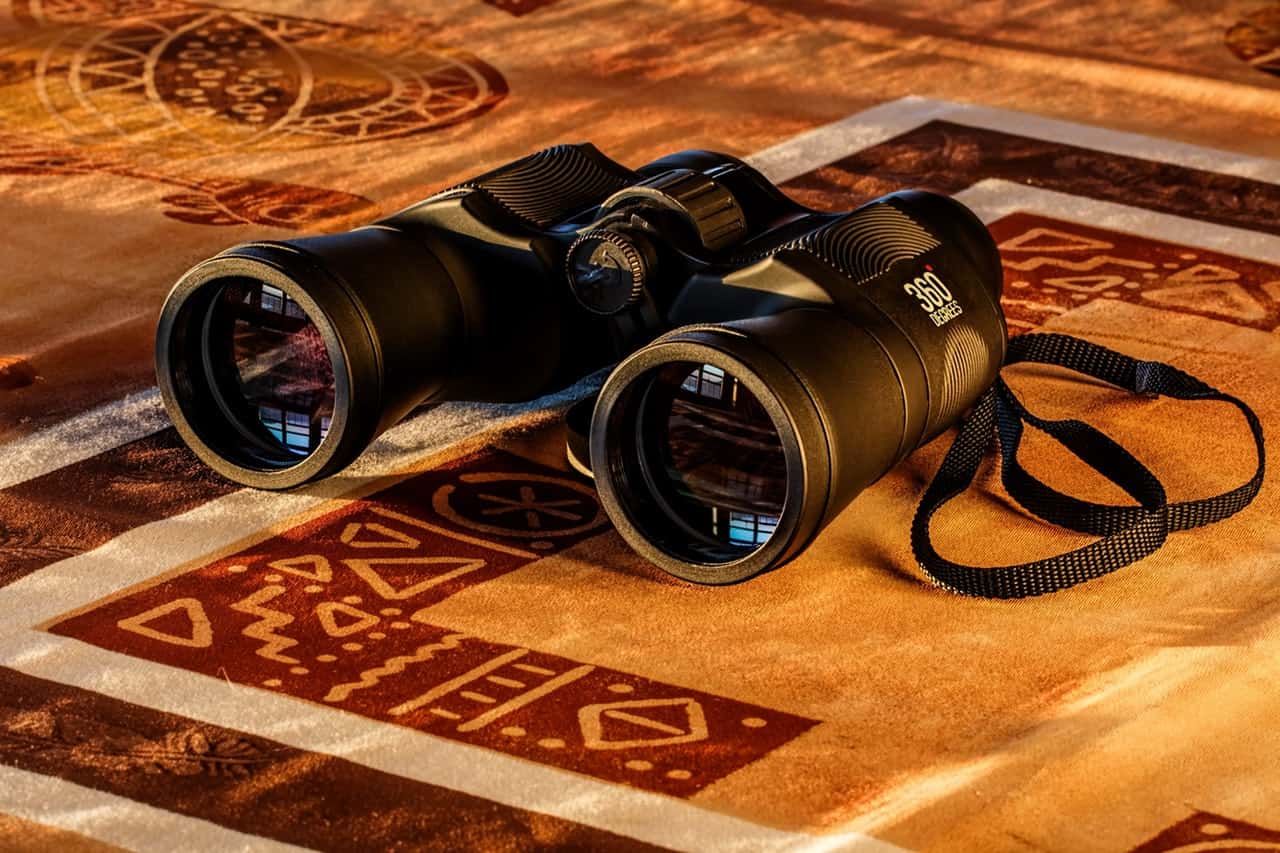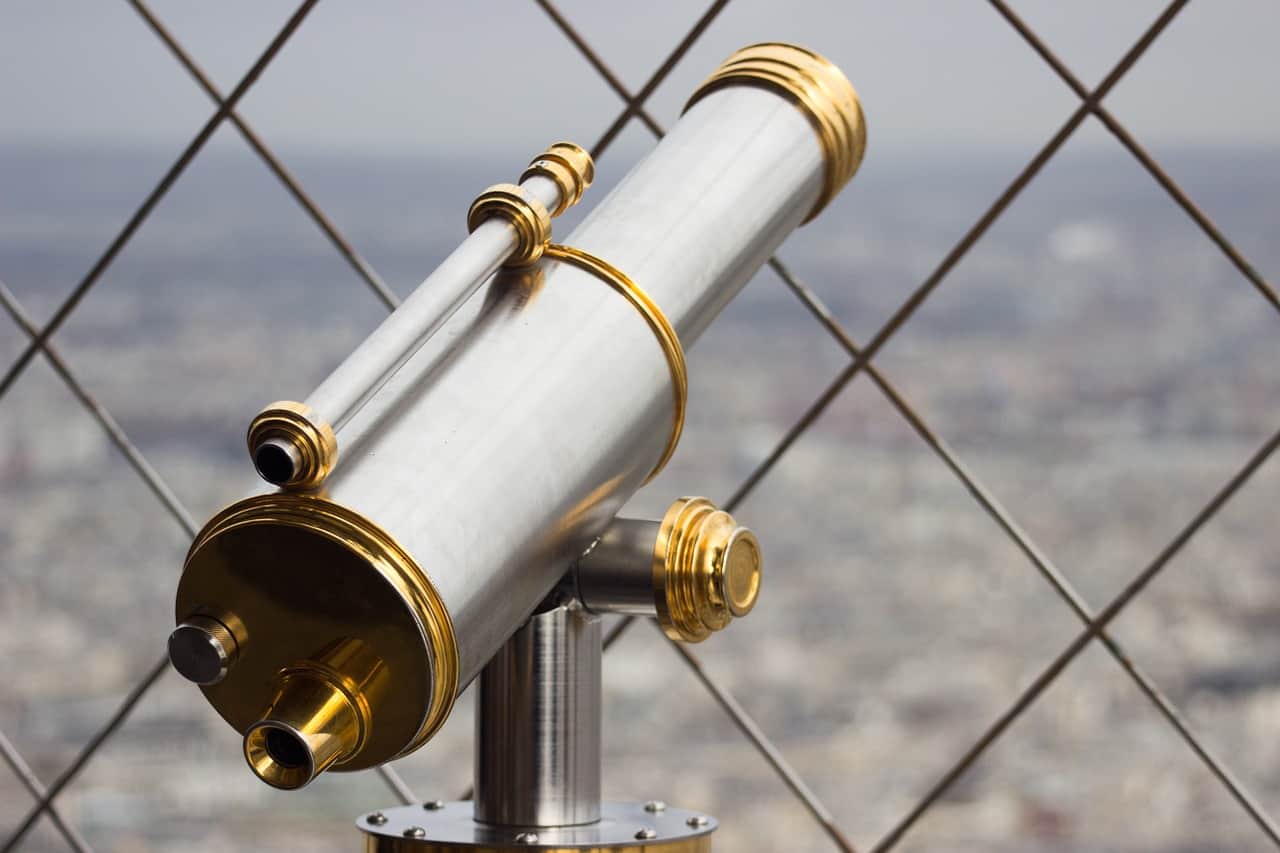Do binoculars work when it’s cloudy outside? You may have seen this question before, but the answer is a little more complicated than you might think. Here’s what you need to know about using binoculars when it’s cloudy outside:
Binoculars can help you see through clouds, but they won’t work miracles. When looking at distant objects through binoculars, clouds can obscure your view. But if the clouds are low and thin, binoculars can sometimes provide a clearer view than the naked eye.
If you’re trying to see something that’s behind thicker cloud cover, however, binoculars likely won’t be able to help. If you’re still unsure about this point, let’s look at whether binoculars can see through clouds and what factors come into play when you do so.
So, if you’ve been curious about this topic, keep reading and let us explain!
Can Binoculars See Through Clouds? If So, How?
Yes, binoculars can see through clouds. This is because the clouds are not solid objects but rather concentrations of water vapor or ice particles suspended in the air. The binoculars magnify the light passing through the clouds, making them appear transparent.
The clouds are seen more clearly through binoculars as they work like magnifying glass. When looking at an object with the naked eye, it appears to be the size it is. However, when you look at the same thing through a magnifying glass, the object appears to be larger. This is because a magnifying glass enlarges the image of an object.
The same principle applies when looking at clouds through binoculars. Your binoculars enlarge the image of an object and make the clouds appear more clearly. However, whether or not you can gaze at the objects next to the clouds will depend on their thickness, ambient light, and binoculars’ power.
Also Read: Can Night Vision Binoculars See Through Walls?
Can Clouds Prevent Binoculars from Seeing through them?
It depends on the type of cloud and the binoculars. Most clouds are made of tiny water droplets that can scatter light in all directions. This means they can cause distortion and blurry images, especially if you look at them through binoculars. The higher the humidity, the thicker the cloud, and the worse it will be for viewing.
However, some types of clouds are composed of bigger water droplets or ice crystals. These clouds can act as a lens and help focus light into a sharper image. So it depends on what type of cloud you’re looking at and what kind of binoculars you use.
Generally speaking, most clouds won’t have much of an impact on visibility. If you’re looking at objects nearby, there might be a slight decrease in clarity due to the cloud cover. However, if you’re looking at something further away, then it’s unlikely that you’ll be able to tell that there’s even a cloud in the sky.
There are a few things to consider when we try to understand this question. The first is that there are different types of clouds, and each one will have a different effect on visibility. Plus, the distance at which you’re looking through the binoculars will also make a difference. Lastly, the size and type of binoculars will also impact your experience.
Also Read: Is It Legal To See Through Curtains With Binoculars?
How Can Binoculars Be Used to See Through Clouds?
Using the right kind of binoculars, you can reflect sunlight off the clouds and into your eyes. This is similar to how a mirror works. Except that instead of reflecting light directly into your eyes, the binoculars reflect it off the clouds, towards your eyes.
The best binoculars to use for this purpose are called “catadioptric” binoculars (or telescopes). These binoculars have lenses in front of them (achromatic doublets or triplets) as well as behind them (mirrors). These binoculars can see through clouds by using a process called diffraction. When light passes through a small opening, such as the aperture of a binocular, it is forced to spread out. This spreading out of the light creates what is called a diffraction pattern.
The diffraction pattern acts as a filter and allows some light to pass through while blocking other light. By looking at the diffraction pattern created by the clouds, you can determine how thick or thin the clouds are and how much sunlight passes through them.
Also Read: Are Image Stabilizing Binoculars Worth It?
Can Binoculars See Through Thick Clouds?
Yes, binoculars can see through thick clouds. However, the visibility will be limited by the light conditions and the amount of moisture in the air.
In general, binoculars with larger objectives (the front lens) will perform better in low light conditions than those with smaller objectives. For example, a 10×50 binocular will typically provide better visibility than an 8×42 binocular in thick clouds. If you are looking for a specific target, such as a bird or animal, it is often best to use binoculars with lower magnifications ( such as 8x or 10x ) to get a wider field of view. This will make it easier to find your target in the thick cloud cover.
Can Binoculars Be Used to See Through Fog?
No, they usually cannot. Binoculars work by magnifying the light that enters them, meaning they can only magnify what is already there. So, if there’s fog in the way, binoculars will magnify the fog, and you won’t be able to see through it.
When dense fog descends, it can reduce visibility to near zero. While this may be a nuisance for drivers or pedestrians, it poses a serious challenge for ships at sea. Many vessels are equipped with radar to help them navigate in foggy conditions. However, even radar has its limitations, and it can be difficult to spot smaller objects, such as buoys or other vessels.
For this reason, binoculars are often used to supplement radars. Unfortunately, binoculars are also of limited use in foggy conditions. The light that passes through fog is scattered in all directions, making it difficult to focus on a specific object. As a result, binoculars are only effective in the fog up to a certain point. Beyond that, the fog simply becomes too dense for the light to penetrate.
There are ways to see through fog, however. The primary method is by using infrared radiation, which is outside of the visible spectrum and thus not affected by fog. This is why infrared cameras are used in surveillance applications – they can “see” through the thick fog that would block out visible light completely.
Can Infrared Binoculars See Through Clouds?
Yes, infrared binoculars can see through clouds. They work by detecting heat signatures, so they can see through things that would obscure normal vision, like clouds or fog. This makes them useful for things like spotting people or animals in the wilderness when visibility is low.
If you’ve tried using binoculars on a cloudy day, you know how frustrating it can be. The clouds reflect and scatter light in all directions, making it difficult to see anything clearly. However, infrared binoculars can help you see through the clouds. Infrared light is not visible to the naked eye, but it can be picked up by special sensors.
These sensors convert the infrared light into an electrical signal and display it on a screen. This allows you to see through clouds that would otherwise block your view. In addition, infrared binoculars can help you see in low-light conditions, such as during twilight or night. As a result, they are an essential tool for anyone who wants to get the most out of their binoculars.
What is the Best Time to Use Binoculars for Cloud-Gazing?
Generally, the best time to use binoculars for cloud-gazing is early morning or evening, when the sun is low. This is because during these times of day, the air is more stable, and there is less turbulence (which causes blurry images otherwise).
The light is usually softer and more diffused in the morning and evening hours than during the middle of the day, resulting in nicer-looking clouds. Of course, if you’re interested in observing a specific type of cloud formation (such as thunderstorms), it’s best to observe when that type of cloud is most likely to be visible.
Final Words
When you want to see through clouds, using binoculars is often your best bet. You can hand-hold them or use a tripod for even steadier vision. There are certain associated factors, however, that you must understand beforehand. Let’s quickly go over them:
- Because we view the sky from below the clouds, we see them somewhat differently than those flying above them. This means that what may look like a small, wispy cloud could be a large thunderhead. So be sure to know the cloud’s size and type before you try to see through it.
- Another factor to consider is atmospheric conditions. If there’s a lot of moisture in the air, for example, it will absorb more light than drier air will, making it harder to see through clouds.
- Finally, keep in mind that not all binoculars are created equal. Those with larger objectives (the lenses furthest from your eyes) will gather more light than smaller ones and provide a clearer view.
So when choosing binoculars for cloud-gazing, go for the largest objective lenses you can afford. With these factors in mind, you can see beyond thick clouds and have a good look at nature’s marvels.

Binos enthusiast since I was 12 – A real expert in all things optics including rifle scopes and red dots. Live in Dubai & love writing, beaches and eating!






